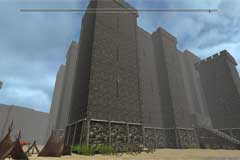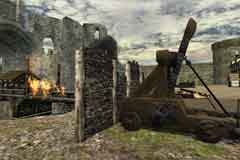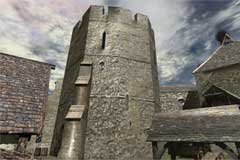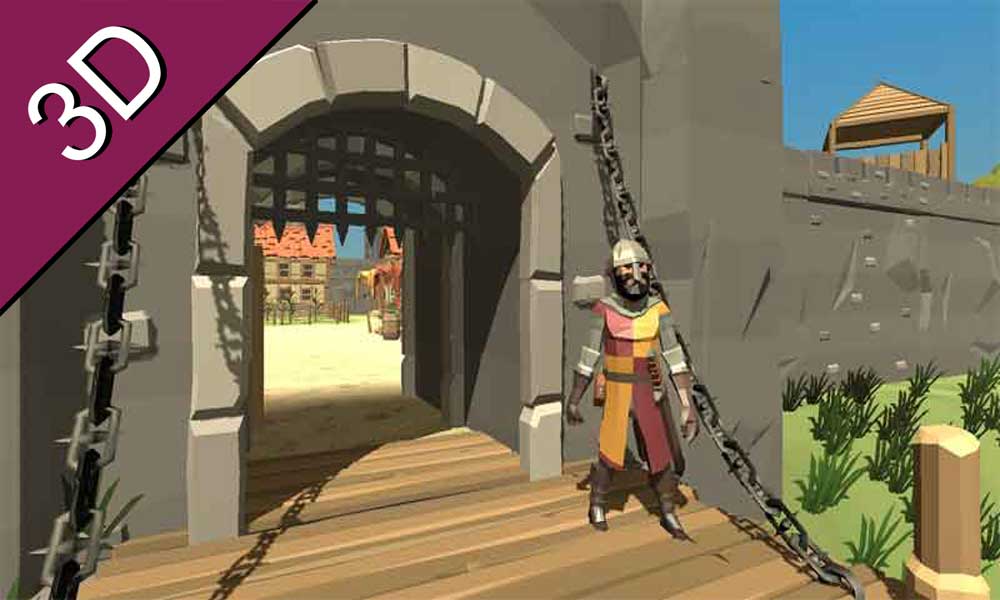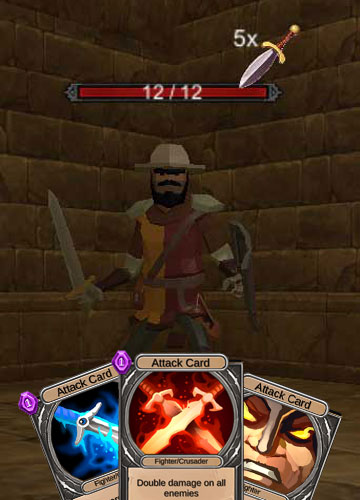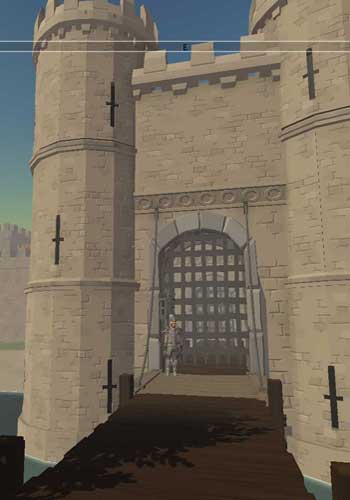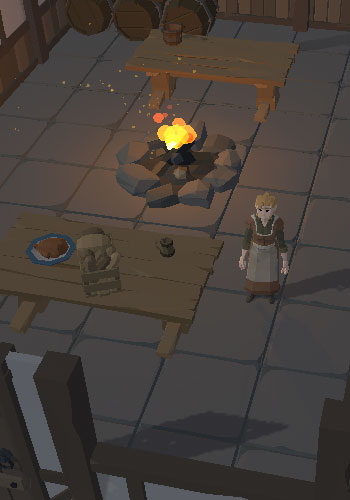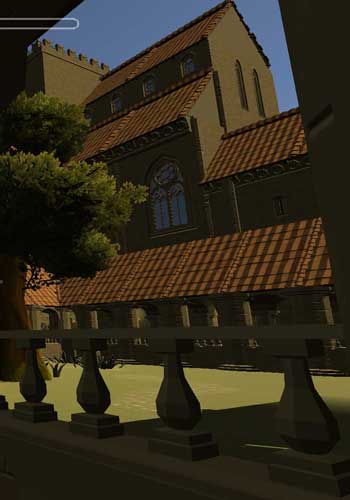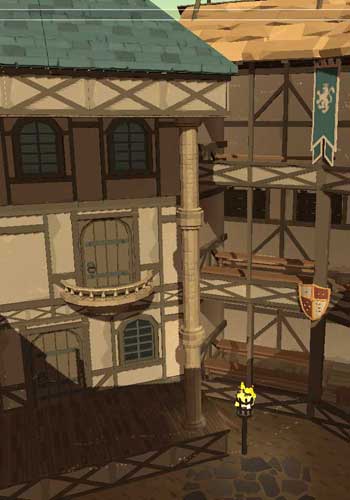Henry VI and Joan of Arc
Tweet he Hundred Years War continued in the reign of Henry VI. The Duke of Bedford commanded the northern territories of France while Charles VII controlled the south. This was the time of the seventeen year old Joan of Arc who rescued the French at the siege of Orleans in May of 1429. Shortly after this success Charles was crowned at Rheims Cathedral and the French won several battles against the English. In response the Duke of Bedford ensured Henry was crowned even though he was still too young to rule unaided. Joan was captured by the English, and executed after a trial. In December of 1431 Henry was crowned King of France at Notre Dame in Paris. In 1435 the English lost the support of the Duke of Burgundy with the signing of the Treaty of Arras where the Duke recognised Charles as the true King of France. The Duke of Burgundy had been the chief supporter of the English and without his support further military actions in France were difficult. In 1435 the Duke of Bedford died and Paris was retaken by the French in 1436.
he Hundred Years War continued in the reign of Henry VI. The Duke of Bedford commanded the northern territories of France while Charles VII controlled the south. This was the time of the seventeen year old Joan of Arc who rescued the French at the siege of Orleans in May of 1429. Shortly after this success Charles was crowned at Rheims Cathedral and the French won several battles against the English. In response the Duke of Bedford ensured Henry was crowned even though he was still too young to rule unaided. Joan was captured by the English, and executed after a trial. In December of 1431 Henry was crowned King of France at Notre Dame in Paris. In 1435 the English lost the support of the Duke of Burgundy with the signing of the Treaty of Arras where the Duke recognised Charles as the true King of France. The Duke of Burgundy had been the chief supporter of the English and without his support further military actions in France were difficult. In 1435 the Duke of Bedford died and Paris was retaken by the French in 1436.

Joan of Arc, known also as the Maid of Orleans, was born in around 1412 in a village called Domremy in Lorraine and was the daughter of a farmer. She had no education apart from religious instruction given to her by her mother and spent most of her time help look after the sick and tending her family's sheep. She was born in a period of anarchy in France where the king was sufferring from bouts of madness and the two rival houses of Orléans and Burgundy fourght to take control of the monarchy. After the death of King Charles, the French throne fell to his son, a young prince who supported the Armagnac Faction, a party who were fighting for the French people. The Burgundians on the other hand swearing allegience to the English king Henry V. Even in a remote farm, the politics of the time must have had an effect on the young Joan.
One evening, on one of her solitary walks, Joan saw a bright light and heard a voice coming from the direction of the local church. The visions continued informing her of her mission to rescue Orléans from the English invaders, save France and ensure the young king was crowned at Rhiems. At the age of 16 Joan went to see Robert de Baudricourt, the head of the French army at Vaucouleurs. Joan told him of the visions and her mission but he did not believe her and sent her home. Early in 1429 Joan left Domremy and returned to Vaucouleurs where again she spoke of her visions. This time she was believed and given permission to see Charles VII, the King of France. Leaving Vaucouleurs on February 24, 1429, Joan headed to Chinon and a meeting with the King.
For protection on her journey Joan dressed as a man and had some attendants. In early March Joan reached Chinon but it took several days before the King granted her an audience. The King was advised to accept Joan's help and she was supplied with white armour, a horse and a detachment of men for her journey to Orléans.
Within the month Joan and her army had reached Orléans with supplies and attacked the English besiegers. In May of 1429 the English withdrew and the siege was lifted. Following up on their success,the French defeated the English at the Battle of Patay and in July Charles was crowned at Rhiems Cathedral.
Joan's main objective was to liberate Paris from the Burgundians, but first she needed to free Compiegne. It was during the fighting here that she was wounded again and this time captured. Joan was then sold to the English who handed her over to the Church. As Compiegne was under the bishopric of Beauvais Joan was delivered to Pierre Cauchon, the Bishop of Beauvais, who led the trial against her in which she was accused of witchcraft and heresy. Joan was found guilty and burnt at the stake in Rouen's marketplace.
1423
1424
1428
1429
1430
1431
1435
1436
1440
1441
1442
1443
1445
1449
1450
1451
1452
1453
Event Participants and Locations
- Timeline of medieval battles
- Charles (VII, King of France 1422-1461)
- Neville, Richard (Earl of Salisbury)
- Joan (of Arc)
- Talbot, John (Lord, Earl of Shrewsbury)
- Henry (VI, King of England 1422-1461, 1470-1471)
- John (of Lancaster, Duke of Bedford)
- Beaufort, Henry (Cardinal-Bishop of Winchester)
- Humphrey (Duke of Gloucester)
- Beaufort, Edmund (2nd Duke of Somerset)
- Richard (Duke of York)
- Margaret (of Anjou)
- Gough, Matthew
- Chateau de Chinon
- Reims Cathedral
- Westminster Abbey
- Rouen
- Parliament
- Harfleur
- Calais
- Aquitaine
Selection of references used:
- 1: Duc de Castries, The lives of the Kings and Queens of France, ISBN:0-297-77676-2, Erdington Library
- 2: R.L.Storey, The End of the House of Lancaster, 1966, Barrie and Rockliff (Barrie Books Ltd) (1966)
- 3: W.H.Hudson, France, The Nation & its Development, MCMXVII, George G. Harrap & Co (MCMXVII)
- 4: J R Lander, The Wars of the Roses, ISBN:0-75090-018-0
- 5: C. W. Oman, Warwick
- 6: H.T. Evans, Wales and the War of the Roses, ISBN:ISBN-0-905-778-278
Related Information
Medieval Episodes
Early Middle Ages
High Middle Ages
- Edward the Confessor and Godwine
- Reasons for the Norman Invasion
- The Norman Invasion
- The Norman Conquest
- Background to the Crusades
- People's and First Crusade
- Second Crusade
- Third Crusade
- Stephen's succession to the throne
- Civil War (The Anarchy)
- The Conquest of Ireland
- Henry II and Thomas Becket
- Excommunication of King John
- The First Barons' War
- The Second Barons' War
- Edward I and Wales
- Edward I and Scotland
Last Middle Ages
- Edward II and Piers Gaveston
- Robert the Bruce
- Isabella, She-Wolf of France and death of Edward II
- Edward III starts the Hundred Years War
- Continues with Richard II
- Henry V invades France
- Henry VI and Joan of Arc
- The Black Death
- The Peasants Revolt
- The Lords Appellant
- Glendower's Revolt
- Wars of the Roses
Early Modern Period
Event Participants and Locations
- Timeline of medieval battles
- Charles (VII, King of France 1422-1461)
- Neville, Richard (Earl of Salisbury)
- Joan (of Arc)
- Talbot, John (Lord, Earl of Shrewsbury)
- Henry (VI, King of England 1422-1461, 1470-1471)
- John (of Lancaster, Duke of Bedford)
- Beaufort, Henry (Cardinal-Bishop of Winchester)
- Humphrey (Duke of Gloucester)
- Beaufort, Edmund (2nd Duke of Somerset)
- Richard (Duke of York)
- Margaret (of Anjou)
- Gough, Matthew
- Chateau de Chinon
- Reims Cathedral
- Westminster Abbey
- Rouen
- Parliament
- Harfleur
- Calais
- Aquitaine

